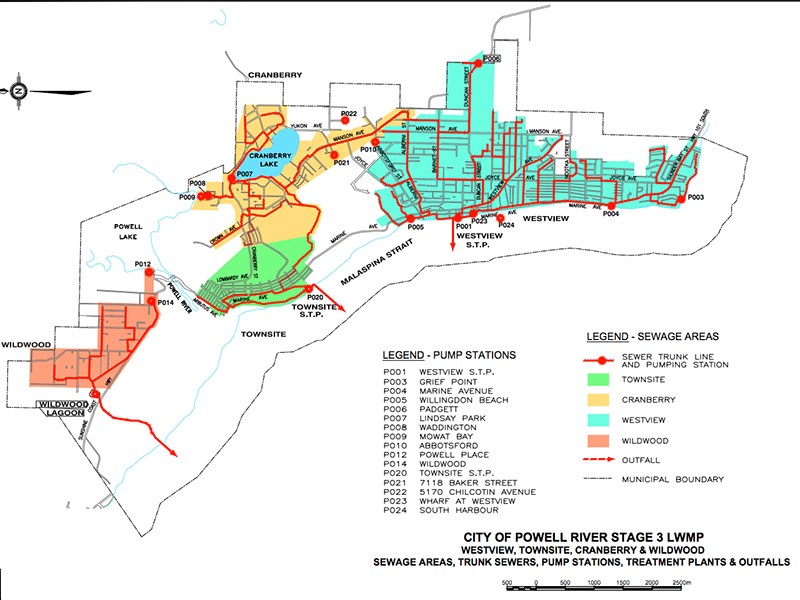City of Powell River has secured a location for its future consolidated liquid waste plant in Townsite.
At its meeting on Thursday, February 2, city council approved $575,000 from the city’s sewer-reserve fund to purchase two 10-acre lots close to the existing wastewater outfall near the old golf course.
Staff and councillors had been working on the land transfer agreement in meetings closed to the public, so the Thursday announcement was to disclose the deal publicly.
The city consolidated wastewater treatment plant plan approved by BC’s Ministry of Environment last June. The location of the plant had yet to be formally completed, although the plan called for use of former golf course land.
The proposed consolidated plant will use the current Townsite outfall for all city wastewater. Currently, there are outfalls in Westview, Townsite, Wildwood and Tla’amin Nation.
City chief financial officer Kathleen Day provided a brief explanation of the deal at the meeting.
“This land-transfer agreement takes a little complicated situation and puts the land into the name of the municipality as one lot when the subdivision is registered with BC Land Titles,” Day told council. She added that the purchase was approved in the 2016 financial plan.
One lot is behind the current Townsite wastewater treatment facility and the other is waterfront land that connects to the shoreline where the facility’s outfall will be located.
Councillor and chair of the city’s liquid-waste-management steering committee Karen Skadsheim told council the idea of the location is to maximize as much existing infrastructure as can be used in the new facility.
“It’s essentially just behind where the existing sewage treatment plant is in Townsite,” said Skadsheim.
The city has agreed to purchase one lot from its development corporation, Powell River Waterfront Development Corporation, and the other from the PRSC joint partnership with Tla’amin.
Councillor and finance committee chair Russell Brewer told council that with the new facility location established, work can continue to find grant funds to pay for the plant, which could cost as much as $30 million.
“I’m just happy to support this as it finally moves us to acquiring property where, at some point, we’re going to build our treatment plant,” said Brewer.
Day said that when she wrote the report on the land transfer, two weeks before presenting it, she thought one of the lots would be purchased with funds from the sewer-reserve fund and the other through short-term borrowing.
After deliberation and discussion with Brewer and city director of infrastructure Tor Birtig, it was decided that both lots would be paid for from the reserves, she said.
The infrastructure development portion of the sewer-reserve fund is currently $2.5 million. The total reserve is $5.9 million.
During question period after the meeting, Powell River resident George Orchiston commented that he was glad the chief financial officer reconsidered the borrowing. To borrow the money would not be consistent with council’s policy toward using reserve funds to pay for the replacement of existing infrastructure, he said.
Orchiston asked if five acres of the waterfront development corporation’s 10-acre parcel was land the city acquired from Catalyst Paper Corporation.
City chief administrative officer Mac Fraser said it was. Orchiston then asked why it was necessary for the city to buy land from itself, spending $350,000 for that parcel.
Fraser explained that when Powell River Waterfront Development Corporation acquired the land, it was specifically for economic development purposes.
“Now the sewer fund needs it,” he said, “so the sewer fund is paying to transfer it from economic development to sewer.”
Fraser added that the development corporation has financial responsibilities related to the land.



